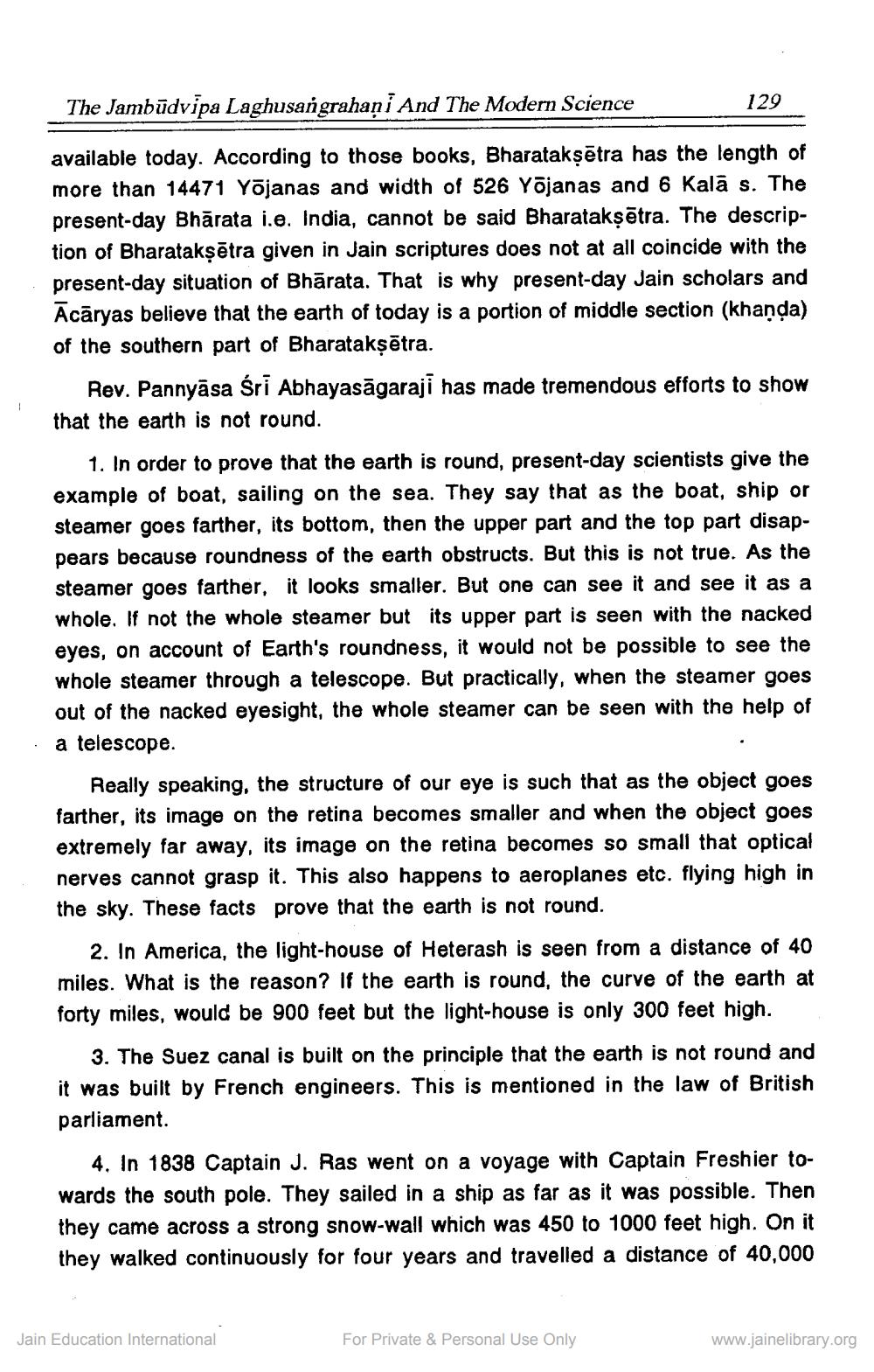________________
The Jambūdvipa Laghusangrahani And The Modern Science
129
available today. According to those books, Bharataksētra has the length of more than 14471 Yojanas and width of 526 Yojanas and 6 Kalā s. The present-day Bhārata i.e. India, cannot be said Bharatakşētra. The description of Bharataksētra given in Jain scriptures does not at all coincide with the present-day situation of Bhārata. That is why present-day Jain scholars and Ācāryas believe that the earth of today is a portion of middle section (khanļa) of the southern part of Bharataksētra.
Rev. Pannyāsa śri Abhayasagaraji has made tremendous efforts to show that the earth is not round.
1. In order to prove that the earth is round, present-day scientists give the example of boat. sailing on the sea. They say that as the boat. ship or steamer goes farther, its bottom, then the upper part and the top part disappears because roundness of the earth obstructs. But this is not true. As the steamer goes farther, it looks smaller. But one can see it and see it as a whole. If not the whole steamer but its upper part is seen with the nacked eyes, on account of Earth's roundness, it would not be possible to see the whole steamer through a telescope. But practically, when the steamer goes
out of the nacked eyesight, the whole steamer can be seen with the help of . a telescope.
Really speaking, the structure of our eye is such that as the object goes farther, its image on the retina becomes smaller and when the object goes extremely far away, its image on the retina becomes so small that optical nerves cannot grasp it. This also happens to aeroplanes etc. flying high in the sky. These facts prove that the earth is not round.
2. In America, the light-house of Heterash is seen from a distance of 40 miles. What is the reason? If the earth is round, the curve of the earth at forty miles, would be 900 feet but the light-house is only 300 feet high.
3. The Suez canal is built on the principle that the earth is not round and it was built by French engineers. This is mentioned in the law of British parliament
4. In 1838 Captain J. Ras went on a voyage with Captain Freshier towards the south pole. They sailed in a ship as far as it was possible. Then they came across a strong snow-wall which was 450 to 1000 feet high. On it they walked continuously for four years and travelled a distance of 40,000
Jain Education International
For Private & Personal Use Only
www.jainelibrary.org




